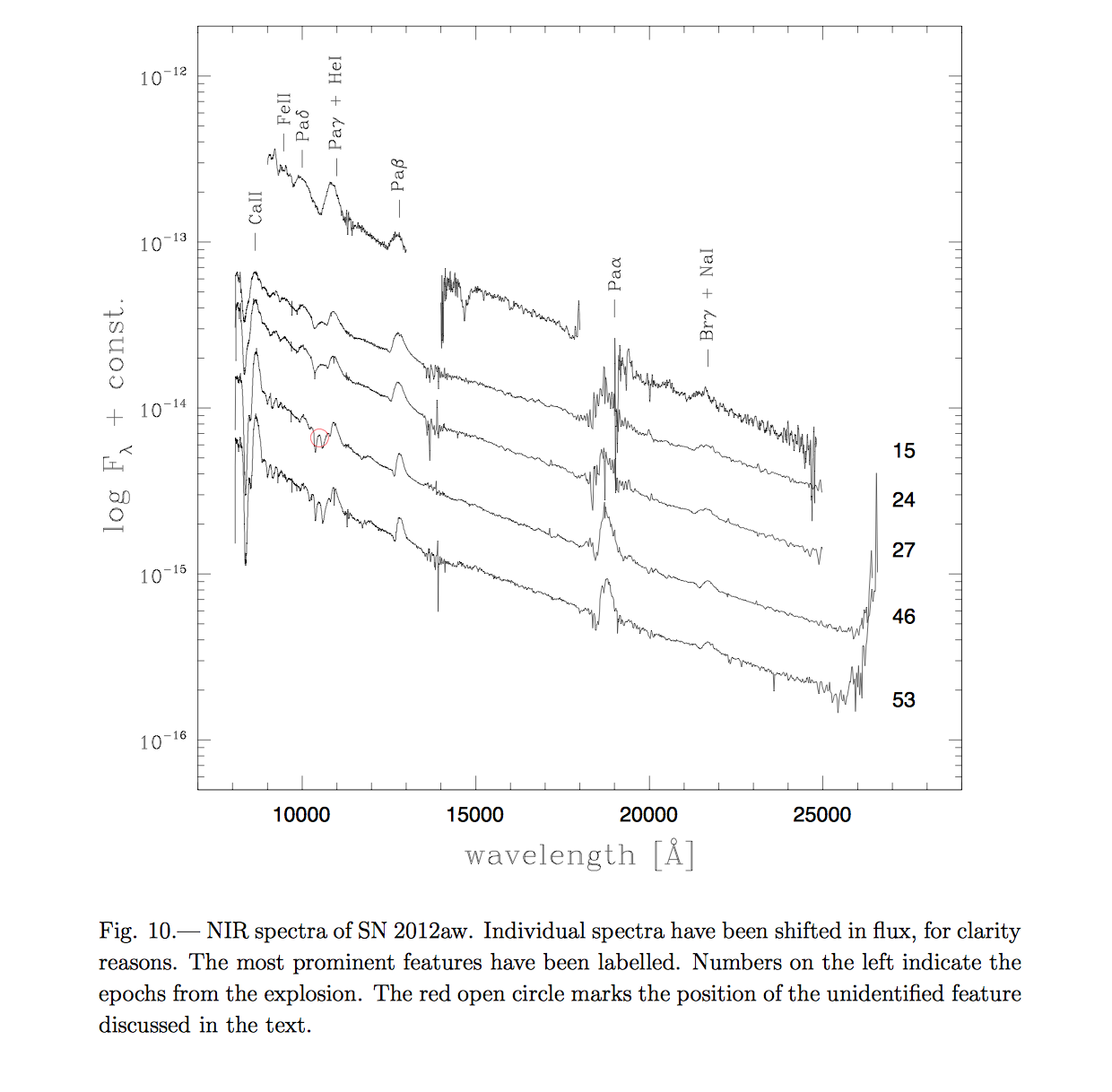Padova-Asiago Supernova Group
Highlights
The Type IIP Supernova 2012aw in M95: hydrodynamical modelling of the photospheric phase from accurate spectrophotometric monitoring.
Dall'Ora, M. etal. 2014, ApJ 787, 139 (link to pdf)
We present an extensive optical and near-infrared photometric and spectroscopic campaign of the type IIP supernova SN 2012aw. The dataset densely covers the evolution of SN 2012aw shortly after the explosion up to the end of the photospheric phase, with two additional photometric observations collected during the nebular phase, to fit the radioactive tail and estimate the 56Ni mass. Also included in our analysis is the already published Swift UV data, therefore providing a complete view of the ultraviolet-optical-infrared evolution of the photospheric phase. On the basis of our dataset, we estimate all the relevant physical parameters of SN 2012aw with our radiation-hydrodynamics code: envelope mass Menv~20Msun, progenitor radius R~3x10^13 cm (~430Rsun), explosion energy E~1.5 foe, and initial 56Ni mass ~0.06 Msun. These mass and radius values are reasonably well supported by independent evolutionary models of the progenitor, and may suggest a progenitor mass higher than the observational limit of 16.5+/-1.5Msun of the Type IIP events. 10
Dall'Ora, M. etal. 2014, ApJ 787, 139 (link to pdf)
We present an extensive optical and near-infrared photometric and spectroscopic campaign of the type IIP supernova SN 2012aw. The dataset densely covers the evolution of SN 2012aw shortly after the explosion up to the end of the photospheric phase, with two additional photometric observations collected during the nebular phase, to fit the radioactive tail and estimate the 56Ni mass. Also included in our analysis is the already published Swift UV data, therefore providing a complete view of the ultraviolet-optical-infrared evolution of the photospheric phase. On the basis of our dataset, we estimate all the relevant physical parameters of SN 2012aw with our radiation-hydrodynamics code: envelope mass Menv~20Msun, progenitor radius R~3x10^13 cm (~430Rsun), explosion energy E~1.5 foe, and initial 56Ni mass ~0.06 Msun. These mass and radius values are reasonably well supported by independent evolutionary models of the progenitor, and may suggest a progenitor mass higher than the observational limit of 16.5+/-1.5Msun of the Type IIP events. 10
